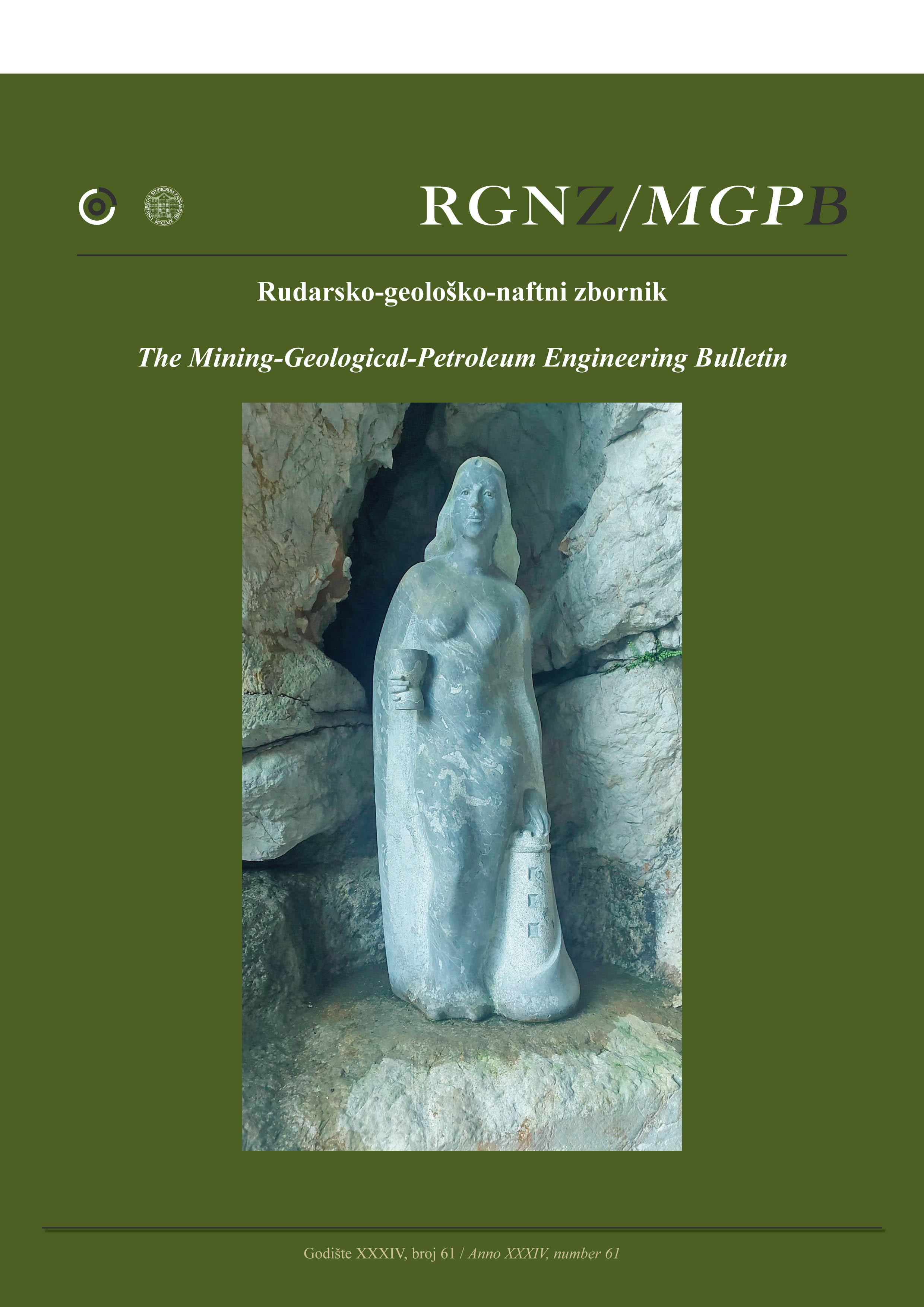Improving mechanical properties of oil well cement using polypropylene fibers and evaluating a new laboratory method for measuring the casing cement bonding strength
DOI:
https://doi.org/10.17794/rgn.2022.5.3Keywords:
well cement, rheology, Mechanical Properties, polypropylene fiber, Casing cement bonding strengthAbstract
The main objective of this study is to enhance the poor performance of oil well cement in terms of mechanical properties by using pure polypropylene fibers. Polypropylene fibers were added in increasing concentrations from 0 to 0.1%, 0.3%, 0.5%, 0.7%, and 0.9% by weight of cement (BWOC). Rheological parameters, density, fluid loss, permeability, porosity, compressive strength, tensile strength, and flexural strength were all tested. A new method for measuring the tensile strength of cement samples in the presence of a casing is also evaluated in this research. In addition, the interfacial bonding shear strength, which represents the strength of cement adhesion to the casing, was measured using a new laboratory procedure. The influence of adding polypropylene fibers on rheology, density, and fluid loss can be ignored, according to the results of the experiments. The permeability and porosity of cement samples increased as the proportion of polypropylene fibers increased, according to the findings. Further, an increase in polypropylene fibers concentration up to 0.3%BWOC led to improving the mechanical properties at different curing times. The bonding strength of the casing cement interface improved with increasing polypropylene fibers concentration up to 0.5% BWOC.
Downloads
Published
How to Cite
Issue
Section
License
Copyright (c) 2022 authors and journal

This work is licensed under a Creative Commons Attribution 4.0 International License.
Creative Commons-BY
Authors who publish with this journal agree to the following terms:
In agreeing this form, you certify that:
- You read the ethical codex of the RGN zbornik available at journal web.
- You submitted work is your original work, and has not previously been published and does not include any form of plagiarism.
- You own copyright in the submitted work, and are therefore permitted to assign the licence to publish to RGN zbornik.
- Your submitted work contains no violation of any existing copyright or other third party right or any material of an obscene, libellous or otherwise unlawful nature.
- You have obtained permission for and acknowledged the source of any illustrations, diagrams or other material included in the work of which you are not the copyright owner.
- You have taken due care to ensure the accuracy of the work, and that, to the best of your knowledge, there are no false statements made within it.
- All co-authors of this submitted work are aware of, and in agreement with, the terms of this licence and that the submitted manuscript has been approved by these authors.
Publication licence
You retain copyright in your submitted work, according to journal license policy (CC-BY). By signing this form you agree that RGN zbornik may publish it under the publication licence. In summary the licence allows the following:
Anyone is free:
- To copy, distribute, display, and perform the work.
- To make derivative works.
Under the following conditions:
- The original author must always be given credit.
- The work may not be used for commercial purposes.
- If the work is altered, transformed, or built upon, the resulting work may only be distributed under a licence identical to this one.
Exceptions to the licence
In addition to publishing the work printed under the above licence, RGN zbornik will also enable the work to be visible online.
The journal editorial can change the licence rules anytime but it cannot retroactively restrict author(s) rights.


